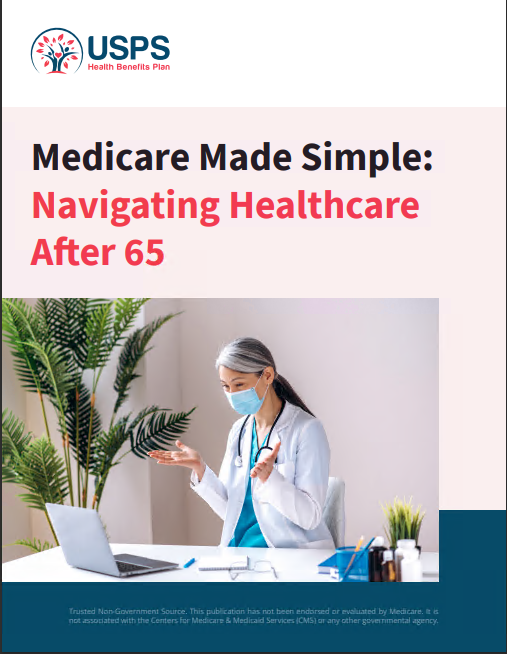Key Takeaways
-
Medicare Part D provides essential prescription drug coverage, helping to manage your out-of-pocket medication costs effectively.
-
Understanding how Medicare Part D works and its benefits can help you make informed decisions about your healthcare coverage.
Breaking Down Medicare Part D Basics
If you’re navigating your healthcare options, Medicare Part D deserves your attention. As a USPS worker or retiree, managing prescription drug costs is crucial, and Medicare Part D is specifically designed to address this need. But how does it work, and what makes it essential for your health coverage?
Medicare Part D is a federal program offering prescription drug coverage through private insurance companies approved by Medicare. It’s a standalone plan you can pair with Original Medicare (Parts A and B) or include as part of a Medicare Advantage plan. In 2025, a notable feature of Medicare Part D is the introduction of a $2,000 annual out-of-pocket cap on prescription drug expenses, offering significant financial relief.
Let’s explore the key features and benefits of Medicare Part D and how it impacts your medication costs.
Enrollment Periods: When to Sign Up
Timing is everything when it comes to Medicare Part D. Missing the right enrollment windows could lead to late enrollment penalties or gaps in coverage. Here’s a breakdown of the key enrollment periods:
Initial Enrollment Period (IEP)
When you first become eligible for Medicare, you can enroll in Part D during the seven-month Initial Enrollment Period. This starts three months before your 65th birthday, includes the month of your birthday, and ends three months afterward.
Annual Enrollment Period (AEP)
The Annual Enrollment Period runs from October 15 to December 7 each year. During this time, you can enroll in, switch, or drop a Medicare Part D plan. Any changes take effect on January 1 of the following year.
Special Enrollment Periods (SEP)
Certain life events, such as losing employer coverage or moving to a new area, may qualify you for a Special Enrollment Period. These events allow you to make changes to your Part D coverage outside of the standard enrollment windows.
Understanding Part D’s Costs and Coverage
Medicare Part D is designed to make managing your prescription drug costs simpler, but it’s important to understand the costs associated with the program. These typically include:
Monthly Premiums
You’ll pay a monthly premium for your Part D plan, which varies depending on the plan you choose and the level of coverage it offers. Premiums can also be affected by your income, as higher earners may pay an additional charge called the Income-Related Monthly Adjustment Amount (IRMAA).
Deductibles
In 2025, the maximum deductible for Part D is $590. Some plans may have lower deductibles or none at all, but this is the upper limit for any plan.
Cost-Sharing and Coverage Phases
Your out-of-pocket costs also depend on the phase of coverage you’re in:
-
Deductible Phase: You pay the full cost of your medications until you meet your deductible.
-
Initial Coverage Phase: After meeting your deductible, you share costs with your plan through copayments or coinsurance.
-
Catastrophic Coverage Phase: In 2025, once you reach the $2,000 out-of-pocket cap, you’ll pay significantly lower costs for your medications for the rest of the year.
Key Benefits of Medicare Part D for USPS Workers
As a USPS worker or retiree, your prescription drug needs may vary, but Medicare Part D’s flexibility ensures you’re covered. Here’s why it’s a valuable addition to your healthcare coverage:
Comprehensive Drug Coverage
Medicare Part D plans cover a wide range of prescription medications, including both generic and brand-name drugs. Each plan maintains a formulary, or a list of covered drugs, which is periodically reviewed to ensure relevance and effectiveness.
Financial Protection
With the $2,000 annual out-of-pocket cap introduced in 2025, Medicare Part D provides much-needed financial protection for those with high prescription drug expenses. This cap eliminates the infamous “donut hole,” making it easier to budget for your medications.
Coordination with PSHB Plans
If you’re enrolled in the Postal Service Health Benefits (PSHB) program, Medicare Part D works seamlessly to provide additional prescription drug benefits. PSHB plans often integrate Medicare Part D coverage to help reduce your overall medication costs.
Tips for Choosing the Right Plan
Selecting the best Medicare Part D plan can feel overwhelming, but these tips can simplify the process:
Review the Formulary
Ensure the medications you currently take are covered by the plan’s formulary. Pay close attention to drug tiers, as higher-tier drugs may have higher copayments.
Compare Costs
Look at premiums, deductibles, and out-of-pocket costs. The lowest premium plan isn’t always the most cost-effective if it has high copayments or doesn’t cover your prescriptions.
Check Pharmacy Networks
Choose a plan that includes your preferred pharmacies within its network. Some plans offer additional savings for using specific pharmacies.
Use Medicare’s Plan Finder Tool
Medicare’s online Plan Finder tool is an excellent resource for comparing available Part D plans in your area based on cost, coverage, and customer ratings.
Important Deadlines to Keep in Mind
Mark your calendar with these critical Medicare deadlines:
-
January 1, 2025: New coverage begins for those who made changes during the Annual Enrollment Period.
-
October 15 to December 7, 2025: Annual Enrollment Period for making changes to your Medicare Part D plan for 2026.
Staying on top of these dates ensures you don’t miss out on valuable opportunities to adjust your coverage.
Simplifying Your Healthcare Choices
Medicare Part D is more than just a prescription drug plan; it’s a lifeline for managing medication expenses effectively. Whether you’re transitioning from USPS employment to retirement or looking for better coverage options, understanding Part D’s benefits is essential.
Take the time to evaluate your healthcare needs and explore how Medicare Part D fits into your overall coverage strategy. With the 2025 updates, including the $2,000 out-of-pocket cap, managing prescription costs has never been more accessible.











